Uganda
Things to Do
Kibale Forest
Chimpanzees
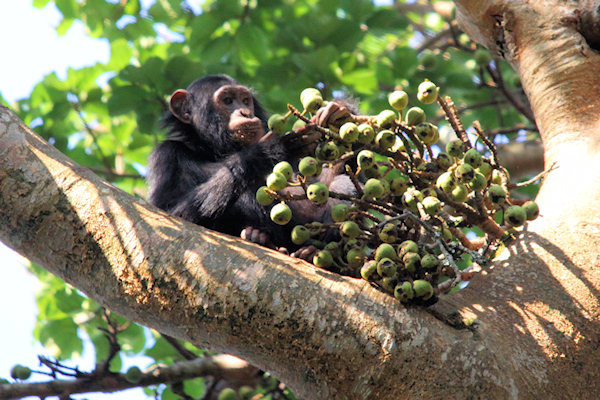 |
|||||
Some 35km south of Fort Portal lies a vast piece of equatorial rainforest, the Kibale Forest
National Park. This recently established reserve is home to the highest concentration of primates
in the world.
The main attraction, however, are the 500 Chimpanzees, which have been habituated to human visitors
since 1992. You can search for some of our closest relatives on a guided 4-hour forest walk. More than
likely, the Chimps will be found on one of the huge figtrees where they spend the day, feeding on the
sweet ripe fruits. Every once in a while, a young male tries to threaten the visitors, but those mock-
attacks are more funny than scary.
Compared to montane forests, the trees here grow much higher and reach incredible circumpherences.
Broad roots support the giants, small streams find their way through the dense undergrowth, and once in
a while, the forest opens into swampy clearings, where buffalos and antelopes graze. The forest is
also home to Uganda's third largest population of Elephants. With its varied flora providing a
plentiful habitat to many species of butterflies and birds, including Hornbills and Turacos, it is
a paradise for botanists and ornithologists alike.
Bigodi Wetland Sanctuary
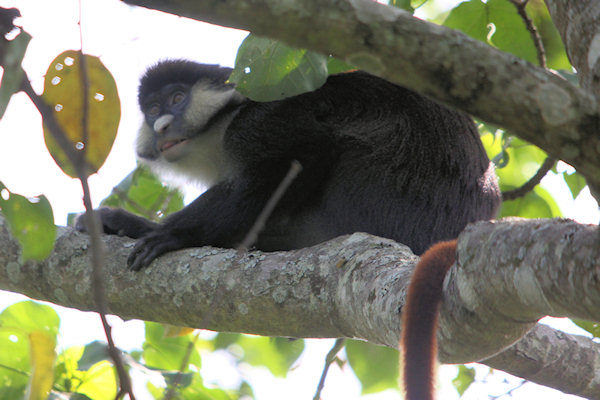 |
|||||
This small sanctuary, which protects the Magombe Swamps, adjacent to Bigodi trading centre and
immediately outside the national park boundary, is an admirable example of conservation and tourism
having a direct benefit at grass-roots level. All the money raised from the trail is used in community
projects in Bigodi - it has so far funded the creation of a small local library as well as the
construction of a new secondary school in the village.
The guided 4,5km circular trail through the swamp is also one of the best guided bird trails in East
Africa, as well as offering a realistic opportunity to see up to six different primate species in the
space of a few hours. Such as Red Colobus Monkey, Black and White Colobus Monkey, Grey-cheeked
Mangabey, Red-tailed Monkey, L'Hoest Monkey, and Baboons
Bigodi Wetland Sanctuary (Birding)
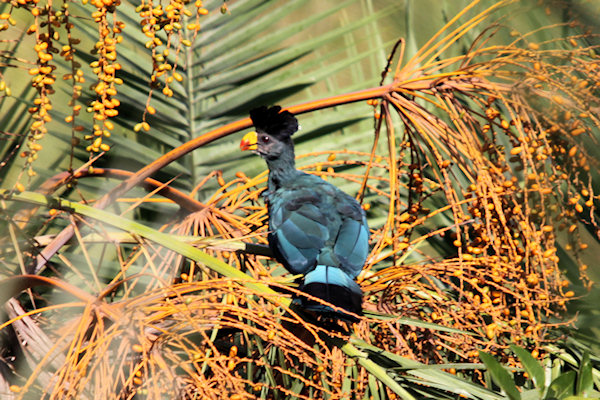 |
|||||
The sanctuary's main attraction to ornithologists is quality rather thean quantity. You'd be very
lucky to identify more than 40 species in one walk, but most of these will be forest-fringe and swamp
specials, and a good number will be West African species at the eastern limit of their range.
There are other places in Uganda where these birds can be seen, but not in the company of local guides
who know the terrain intimately and can identify even the most troublesome greenbuls by sight or call.
One of the birds most strongly associated with the swamp is the Great Blue Turaco, which will be
seen by most visitors. Other regularly seen birds include Barbets, Woodpeckers, Rollers, Parrots,
Sunbirds, Waxbills, Weavers, Flycatchers and Hornbills
Queen Elizabeth National Park
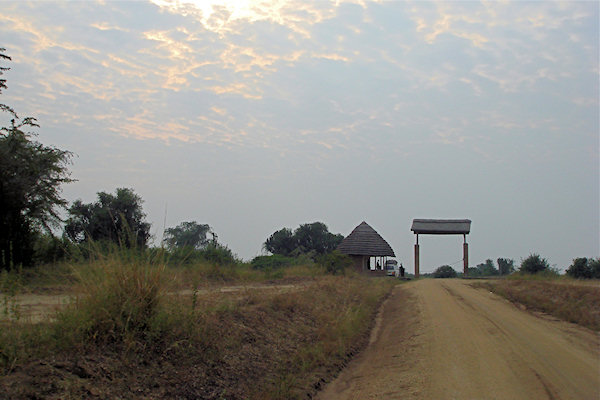 |
|||||
This is a wonderful national park, sometimes dubbed 'the Pearl of Africa or Switzerland
of Africa'. Quite simply this fertile equatorial area is especially scenic, with two lakes (Lake
Edward and Lake George) connected by the Kasinga Channel overlooked by a high peninsula.
You will also find volcanic craters, grassy plains and tropical forest. As a result it has one of the
highest biodiversity ratings in the world.
Hunting exhibits such as stuffed lions, leopard skins, deer heads and elephants tusks may still be
found adorning some hotels and lodges, but the emphasis is certainly more on shooting with a camera
these days.
Much of Uganda's wildlife was poached out in the past, especially elephants, but now the area is
protected and elephants numbers are boosted by those entering the park from the Congo, where poaching
is still a problem.
Queen Elizabeth National Park
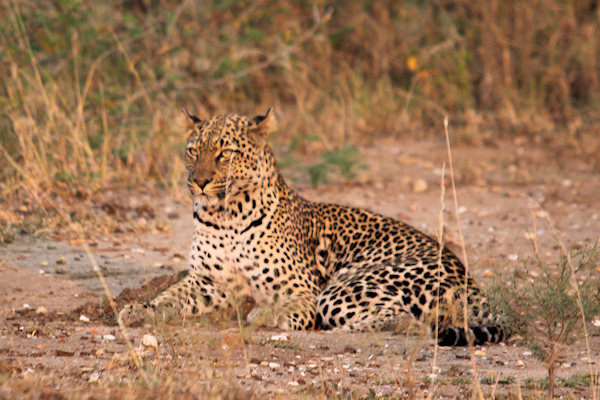 |
|||||
The wide bio-diversity of habitats means that Queen Elizabeth National Park contains the most
astonishing number of species - almost 100 types of mammal and 606 different birds!
The Kasinga Channel alone is said to contain the world's largest concentration of hippos, but
interestingly enough not many crocodiles!
Other wildlife includes Warthogs, Buffalo, Giant Forest Hog, beautifully horned Uganda Kob, Topi,
Waterbuck, Mongoose, Elephant and Leopard.
(There are no Giraffe, Zebra, Impala or Rhino)
Kabale
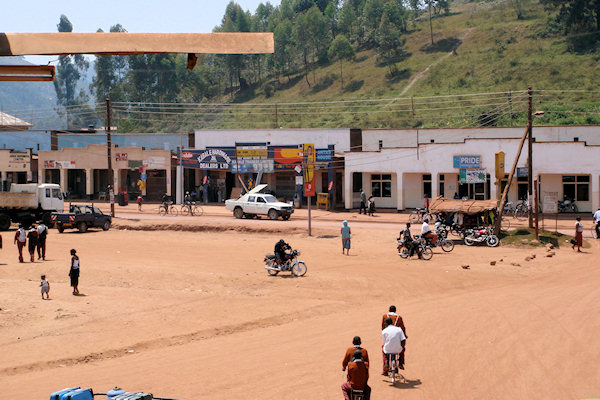 |
|||||
Most visitors to Uganda will probably come through Kabale at some stage on their journey.
Whether proceeding to Bwindi or Mgahinga for Gorilla tracking activities and or Volcano climbs many
will find it necessary to over night here, and there’s no shortage of accommodation.
Kabale is also where the Kampala road from the north joins the road to the borders with both Rwanda
and the Democratic Republic of the Congo. With its dusty streets lined with goods sheds,
precariously overloaded haulage trucks, fuel stations and roadside mechanics, it has a distinct
frontier-town feeling.
Lake Bunyonyi
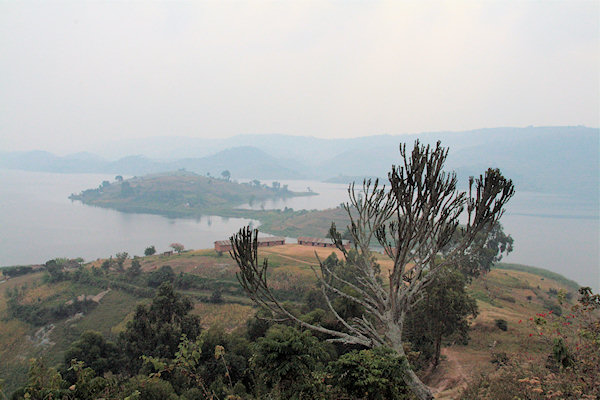 |
|||||
A few kilometers from Kabale town lies Lake Bunyonyi, the deepest crater lake (900 m) in
the country, at an altitude of 1.840 m doted with several islands. Lake Bunyonyi means
" place of little birds " and is particularly good for water birds. It is a very scenic spot.
The lake is also known for it's crayfish.
High lights: Relaxing, Swimming, Birdwatching, Canoeing & Boat Trips - camping at the shores
of the lake or at one of the islands.
Batwa Pygmies
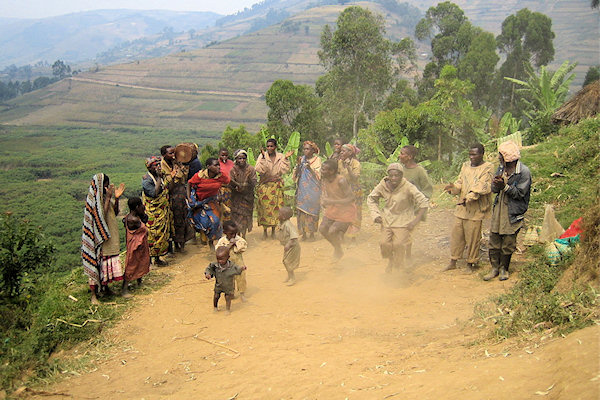 |
|||||
In the pre-colonial era, Kigezi - and in particular the present-day Echuya Forest Reserve
and Bwindi National Park - supported a significant population of Batwa hunter-gatherers,
an ancient pygmoid people who traditionally foraged mainly within the interior of forests.
The lifestyle of Kigezi's Batwa has subsequently been compromised by several factors, ranging from
forest clearance to intermarriage with neighbouring tribes to misplaced missionary zeal. Most
significant perhaps, was the forced resettlement of Batwa living in forest reserves and national parks,
coupled with tight restrictions on their utilisation of traditional resources within these protected
areas, that occured during the colonial and post-independence eras.
Today, an estimated 1.700 Batwa eke out a peripheral existence in Kigezi, many of them living in
artificial villages outside their preferred forest home.
Visits to Batwa communities, with a demostration of their traditional dances, can be arranged through
any of the lodges
Masaka
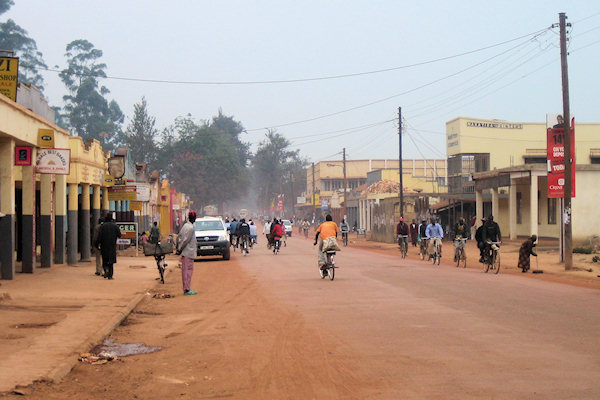 |
|||||
Masaka, the fourth-largest town in Uganda, is a holding place on the route between Kabale and
Kampala. Founded as an Indian trading post, Masaka sufferd more than any other town during the 1979
Tanzanian invasion. Desite some rebuilding in recent years, the town centre still has a rather
down-at-heel appearance and offers little to excite travellers.
Comming from Kabale you pass Lake Mburo Park. The park harbours several species not easily
observed elsewhere in Uganda. It is the only reserve in the country to support a population of
impala, the handsome antelope for which Kampala is named, and one of only three protected areas
countywide where Zebra's occurs. With some luck you might get a glimpse of these animals.
Along the road to Kampale you will cross the Equator. The crossing is marked by a pair of unsightly
but much photographed white circles, and a cluster of good craft stalls and bars. A local entrepeneur
has set op buckets and jugs to demonstrate - for a small fee - how water swirls in opposite directions
in the northern and southern hermispheres